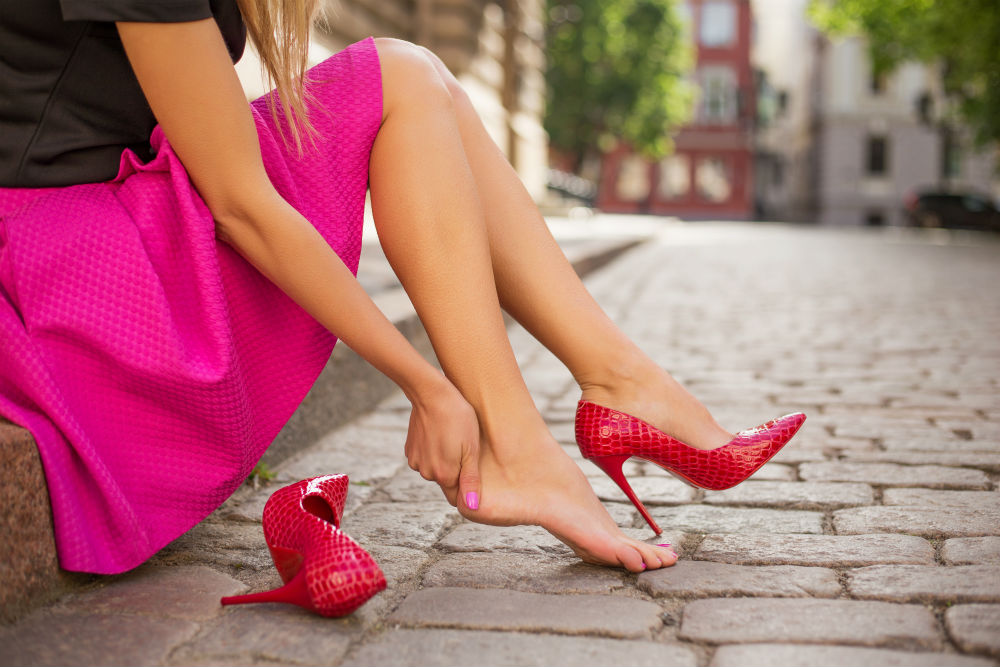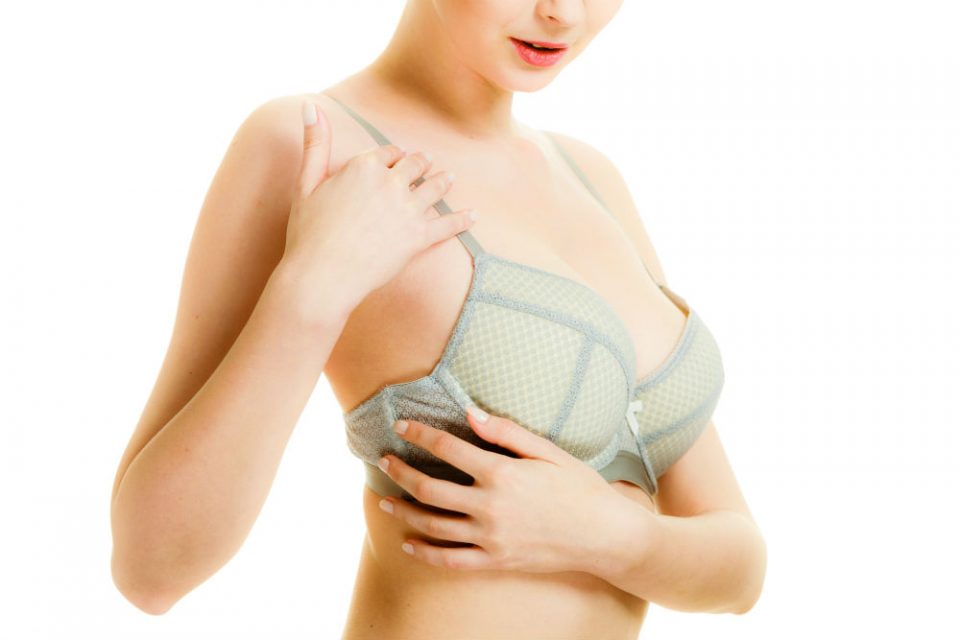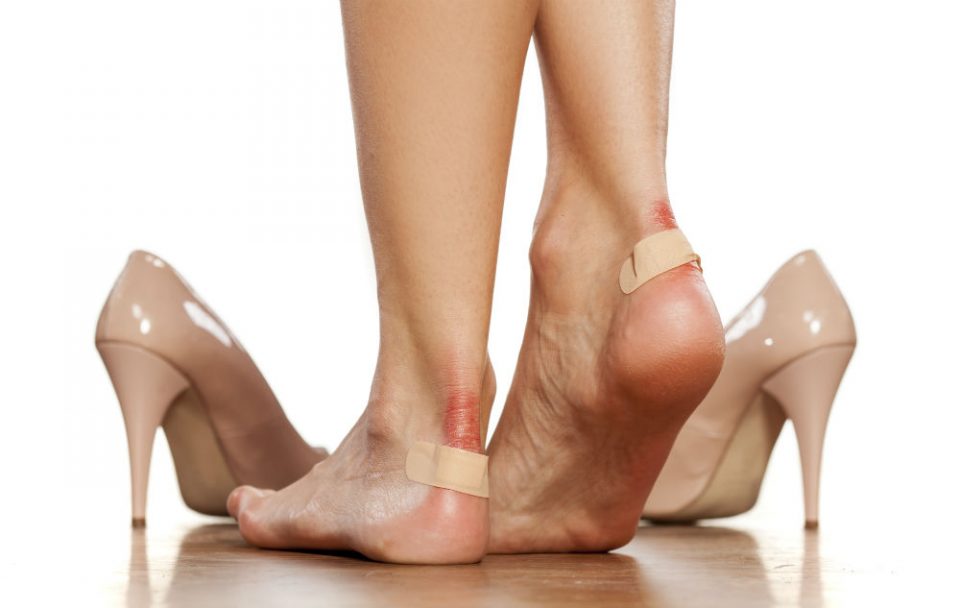
A Problem for Many Women and What Is Guaranteed to Help
As the weather gets warmer, women especially face a familiar problem: if we wear sandals, high heels, or flip flops all day or all night, there’s barely a woman to be found who hasn’t ended up with sore spots or even blisters on their feet. Then it’s no more beautiful shoes for now. Otherwise they’d carry on rubbing in the same place and just make everything worse. But why does it even happen in the first place, and is there nothing we can do about it?
Chafing—what is it?
Whenever skin rubs against skin or against clothes, the result is sore patches or—in the worst cases—blisters, especially on your feet. This is due to the friction that occurs when we make the same movements over and over again. The skin then becomes sore. It’s a particularly common problem in spring when the weather gets warmer again and we dust off our strappy sandals and ballet flats once more. Our feet are no longer used to these shoes, and the parts of our feet that barely have any demands placed on them in winter once again take a punishing. The thighs and upper arms often rub, too, leading to sore patches and, in the worst cases, even blisters. Women have shunned many a pair of shoes or some skirt or other as a result.
Where sore patches can occur

In general, every person is different and everyone has sensitive areas on different parts of their body. However, chafing and blisters most commonly occur on the following parts of the body:
- The inner thighs: The skin between our thighs rubs constantly when we walk, leading to irritation of the skin. As there is usually a piece of clothing between our thighs in winter, preventing them from rubbing, women are particularly prone to chafing in the summer months when wearing shorts and skirts.
- The feet: This is a familiar problem for women, especially when wearing high heels or in summer with sandals. For example, if your shoes still need to be worn in, the skin on your feet can quickly become inflamed or even form blisters. Straps between your toes are another common source of pain, however, as is the little toe, which constantly rubs against the material of the shoe when you wear high heels. Once the skin has become irritated or a blister has formed, it’s time to put your beautiful shoes to one side for the time being, as it’s simply too painful to carry on wearing them. Depending on the kind of shoes, skin sores can appear between your toes—in the case of sandals and flip flips, for example—or on your heels—with ballet flats and high heels, for example. Your toes themselves can suffer from the friction that occurs as well.
If your shoes are too big or too small or there is moisture inside the shoe, this can also quickly lead to chafing and blisters on your feet. This is a problem familiar to those who like to hike or simply go on long walks.
- The upper body: Sports bras often result in chafing and irritated skin among athletes. Unfortunately, the same is also true of bras that women wear in their day-to-day lives. Like sports bras, they have seams that can chafe the skin. We are constantly moving, even in our ordinary day-to-day lives. As a result, many women suffer from skin irritation caused by the seams of their bra.
In general, the seams of our clothes can be responsible for rubbing that then causes sore patches and, in the worst cases, results in a blister.
How to deal with chafing and blisters on your feet—before they happen

We have put together a few tips to help you get through the summer without any blisters or chafing:
- Don’t wear shoes that are too tight. That’s often what the problem is. It will make your toes and heels sore, in particular.
- If you only ever wear one pair of shoes and one bra, your skin will also constantly be subjected to the same rubbing on the same part of your body. Try to mix things up instead. Don’t wear shoes that rub for more than a day at a time, and don’t wear them for too long either. The same goes for bras with seams that irritate your skin, and for any other items of clothing with seams that can cause problems.
- You should always break your shoes in over a short period of time. New shoes in particular often cause problems. Not just because the material is still very stiff but because your feet aren’t used to the new shoes yet.
- Are you getting sores and blisters on your feet in your sneakers, too? Your socks could be to blame here. Try changing them. It may solve your problem, meaning you can wear your favorite sneakers once again without having to worry.
Our insiders’ tip – 2SKIN
Isn’t it actually a bit ridiculous to have to wear new shoes in before wearing them, to be unable to wear the same beautiful shoes every day, and to be able to wear your favorite things for just a few hours at a time? That’s why we’ve got something much better for you—our pjuractive 2SKIN. Simply apply the invisible anti-chafing gel to those areas of skin that you know are sensitive and are likely to rub. It immediately forms a protective film to protect your skin. It’s a breeze to use and offers protection that lasts for hours.
We girls here at pjuractive don’t have any more problems with blisters on our feet or sore patches. Now we can wear our high heels, sandals, ballet flats and the like constantly—all day and all night. Try it for yourself!